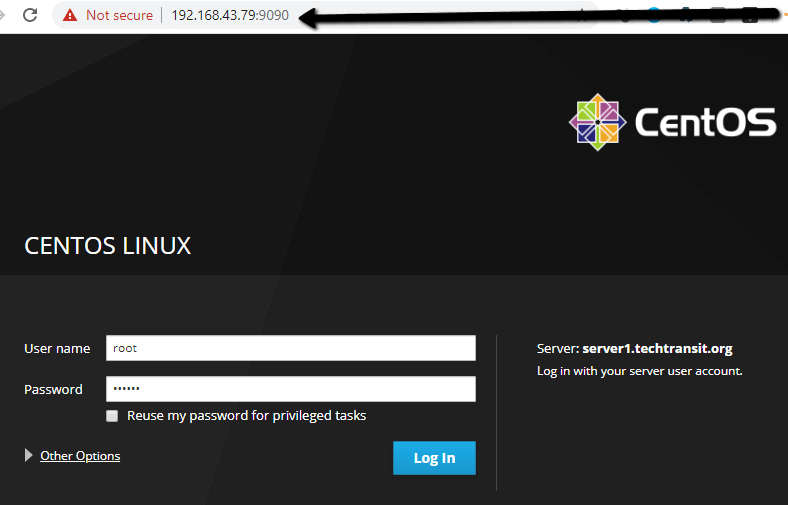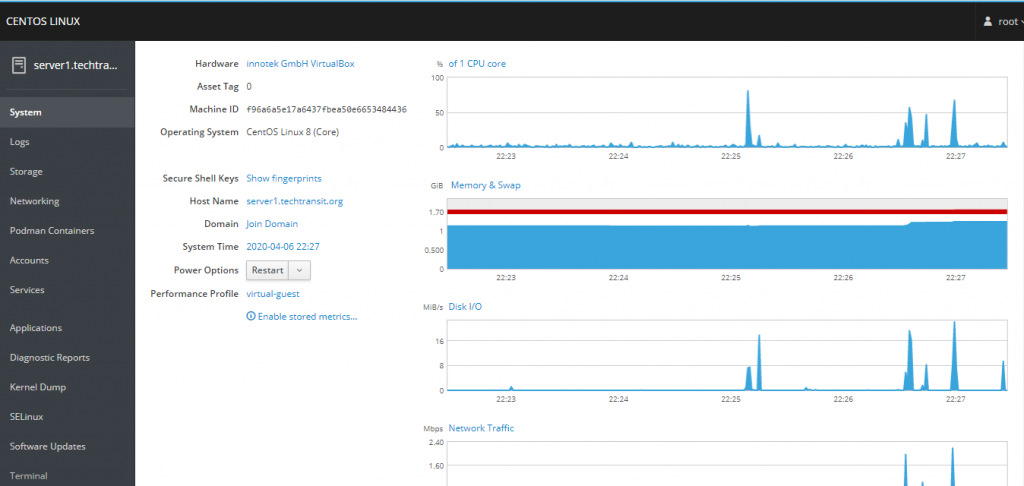Last Updated on 4 months by Sachin G
The cockpit is a web console, an interactive management utility that can be able to manage local as well as remote server administration. It offers system statistics of the current time, we can troubleshoot all tasks, that we were doing manually like Configuring SELinux, running commands from the terminal session, tuning system performance, etc. In this topic, we will discuss installing on Ubuntu and rpm-based Linux distributions.
This utility uses a management tool. We can manage system services, virtual machines, containers, storage devices, and user management.
Supported Operating System :
Cockpit package support multiple operating system , some of names are below listed.
(1) Fedora CoreOS (3) Red Hat ( RHEL ) (4) Atomic (5) CentOS Stream (6) Debian (7) Ubuntu (8) Clear Linux (9) ArchLinux (9) Alma Linux (10) SUSE Linux
Steps to Install Cockpit Utility
Here i am adding both commands for RPM and Debian-based Operating systems. CentOs have their own repository for package installation, so we will use the default provided a repository for this utility to install.
Steps to Install Cockpit on Ubuntu 24.04
Before installing Cockpit, it’s important to ensure your system is up-to-date. Run the following commands:
sudo apt update
sudo apt upgrade -y
Cockpit is available in the default Ubuntu repositories starting with Ubuntu latest version . To install it, simply run:
sudo apt install cockpit -y
Installing Cockpit on Other Linux Distributions
CentOS/RHEL Fedora and AlmaLinux/Rocky Linux
Here we are going to search cockpit utility in the repository. This search command also showing utility other module and plugins, you can add more plugin or module , as you want to manage.
For CentOS/RHEL and AlmaLinux/Rocky Linux , may be you needed the Extra Packages for Enterprise Linux (EPEL) repository
sudo dnf search cockpit
Below are command to install utility , Generally Cockpit is already installed on the latest CentOs OS , but it is not active and Enabled for the boot time .
sudo dnf install cockpit -y
Enable and Start the Cockpit Service
Once installed, enable and start the Cockpit service using the following commands:
systemctl enable cockpit.socket systemctl start cockpit
Verify Cockpit Installation
To ensure that Cockpit is running, check its status:
sudo systemctl status cockpit.socket
Add the service of cockpit to open web console from outside our network.
firewall-cmd --permanent --zone=public --add-service=cockpit firewall-cmd --reload
Now you can open the web console of utility through browser , Use your the machine IP or hostname to access the web console.
https://host_or_ip:9090
Accept the self-signed certificate by adding it as an exception.

BASIC ADMINISTRATION TASK
We can do basic server administration task like reboot , shutdown , log, network configuration , performance and monitoring and hardware information etc through web console.


I’m Sachin Gupta — a freelance IT support specialist and founder of Tech Transit. I’m certified in Linux, Ansible, OpenShift (Red Hat), cPanel, and ITIL, with over 15 years of hands-on experience. I create beginner-friendly Linux tutorials, help with Ansible automation, and offer IT support on platforms like Upwork, Freelancer, and PeoplePerHour. Follow Tech Transit for practical tips, hosting guides, and real-world Linux expertise!
